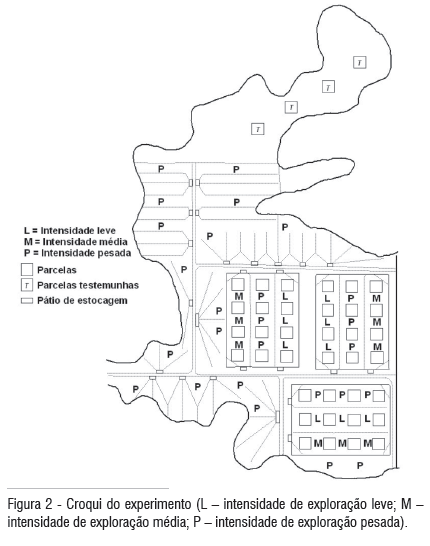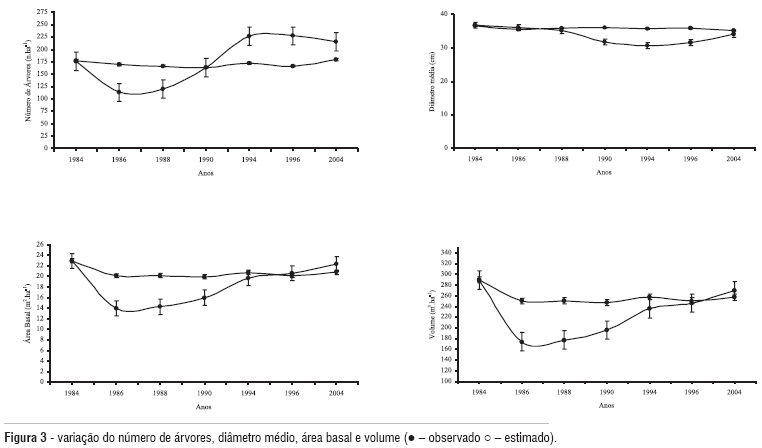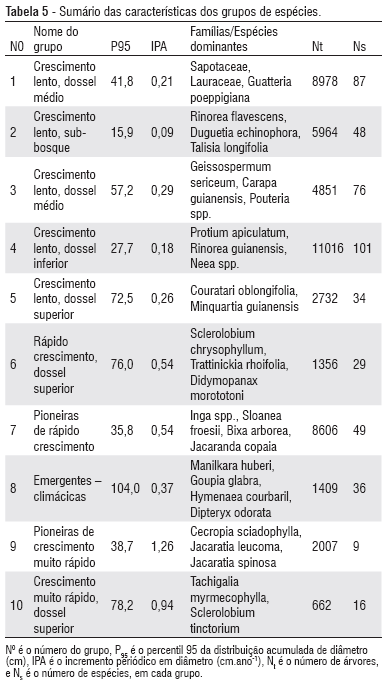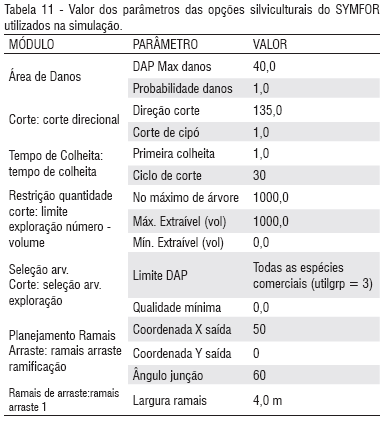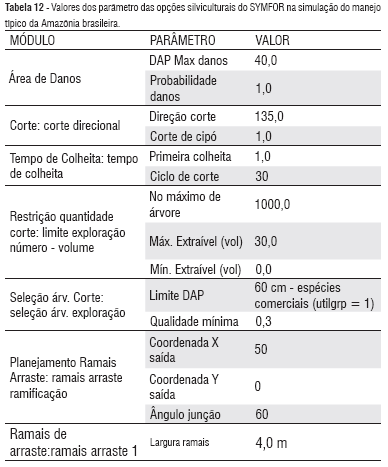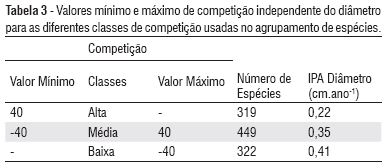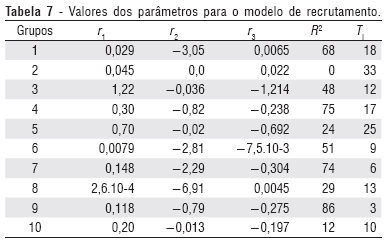The SYMFOR model was used to simulate the ecological processes of tree growth, mortality and recruitment, and the forest management processes, in the terra firme forests of the eastern Amazon. The simulation utilized all the trees that have a diameter greater than 5 cm, from 40 permanent sample plots of 1 ha each (36 logged and 4 unlogged). The stand was measured in 1984, logged in 1985 and remeasured in 1986, 1988, 1990, 1994, 1996 and 2004. Ten species groups are used to describe the natural processes affecting tree behavior. Model performance compares the simulation results with real data describing the forest recovery for 19 years following logging. The treatments, combinations of logging intensities (15%, 25% and 35% of the total volume of the trees higher than 60 cm of DBH had been tested) and thinning intensities (0%, 30%, 50% and 70% of the original basal area) were analyzed as management strategies. The model was applied to simulate current forest management practice in the Brazilian Amazon, with 30 m³ ha−1 of timber extracted with a cutting cycle of 30 years. Results show that the similarity among observed and simulated data for SYMFOR validated the model to represent the dynamics of the unlogged forest. In the simulation of the current management practice applied in the Amazon forest, it is suggested that the financial benefits decrease with successive harvests and, consequently, the timber volume cannot be sustained.
Forest management; Growth models; Amazon; SYMFOR; SIMFLORA


